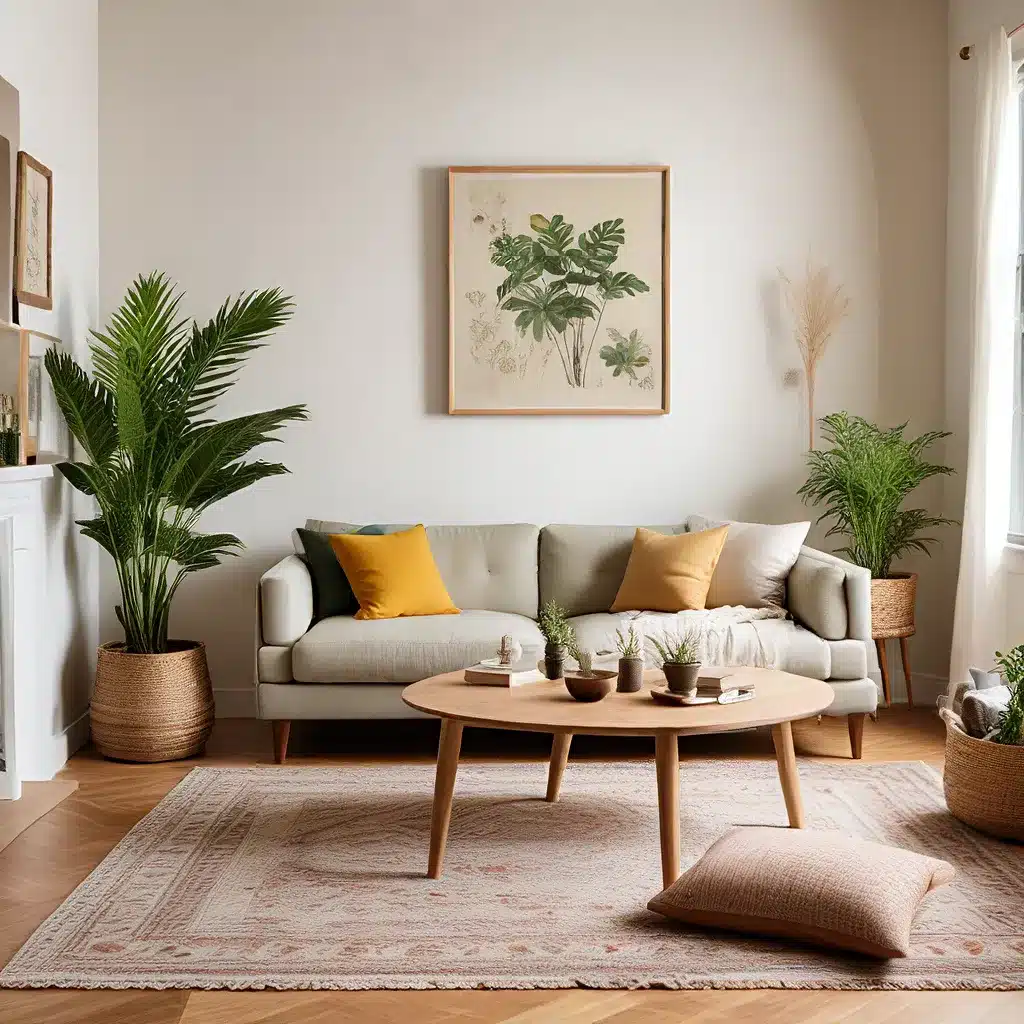
In the ever-evolving world of interior design, a growing trend has emerged that prioritizes not just aesthetics, but also environmental consciousness. Sustainable design has become a driving force, as homeowners and design enthusiasts alike seek to create spaces that are not only visually stunning but also responsibly sourced and environmentally friendly.
Embracing the Eco-Chic Lifestyle
Gone are the days when “eco-friendly” was synonymous with drab and uninspiring. Today’s sustainable design movement has ushered in a new era of stylish and sophisticated home decor options. Homeowners are increasingly seeking out natural materials, renewable resources, and energy-efficient solutions to transform their living spaces into havens of sustainable splendor.
From reclaimed wood furniture to low-VOC paints, the market is brimming with an array of eco-friendly design elements that seamlessly blend form and function. Savvy homeowners are recognizing the value in investing in products that not only elevate their interiors but also minimize their environmental impact.
Sustainable Materials and Finishes
One of the cornerstones of sustainable home decor is the thoughtful selection of materials. Bamboo, a rapidly renewable resource, has emerged as a popular choice for flooring, furniture, and even window treatments. Its durability, natural beauty, and low environmental footprint make it a go-to option for eco-conscious designers.
“Bamboo is an incredibly versatile and sustainable material that can be incorporated into a wide range of design styles,” says interior designer, Olivia Mathews. “From sleek and modern to rustic and textural, bamboo can elevate any space while aligning with eco-friendly principles.”
In addition to bamboo, homeowners are exploring other natural materials, such as cork, jute, and linen, to create visually stunning and environmentally responsible interiors. These materials not only contribute to a healthy indoor environment but also add unique textures and tactile experiences to the overall design.
Energy-Efficient Lighting and Appliances
Lighting and appliances are integral components of any home, and the shift towards sustainability has extended to these elements as well. LED light bulbs have become the norm, offering energy-efficient illumination with a reduced carbon footprint. Homeowners are also exploring smart home technology, which allows them to optimize energy usage and minimize their environmental impact.
“When it comes to sustainable home design, the devil is in the details,” explains interior designer, Sophia Hernandez. “Investing in energy-efficient lighting and appliances not only saves on utility bills but also demonstrates a commitment to reducing one’s ecological footprint.”
Beyond lighting and appliances, homeowners are also exploring renewable energy solutions, such as solar panels and geothermal heating and cooling systems, to power their homes in a more eco-friendly manner. These investments not only contribute to a sustainable lifestyle but also provide long-term cost savings.
Sustainable Textiles and Furnishings
Textiles and furnishings play a crucial role in shaping the overall aesthetic and ambiance of a space. In the realm of sustainable design, homeowners are drawn to organic fabrics, recycled materials, and responsibly sourced upholstery.
Natural fibers, such as linen and organic cotton, have become popular choices for curtains, bedding, and soft furnishings, offering a breathable and hypoallergenic experience while minimizing the use of synthetic materials.
Furniture manufacturers have also embraced sustainability, offering reclaimed wood pieces, upcycled vintage finds, and biodegradable alternatives to traditional materials. These eco-friendly options not only reduce waste but also infuse a unique and one-of-a-kind character into the home.
Curating a Sustainable Lifestyle
Sustainable home decor is not just about the physical elements of a space; it’s about curating a lifestyle that aligns with eco-friendly principles. This extends beyond the walls of the home and into everyday habits and routines.
“Sustainable design is about more than just the physical space,” says interior designer, Lila Abrams. “It’s about adopting an eco-conscious mindset that permeates every aspect of the home, from the materials we use to the cleaning products we choose. It’s a holistic approach to living that prioritizes the health of our planet and our families.”
By embracing sustainable home decor and lifestyle practices, homeowners can create spaces that are not only visually stunning but also responsibly crafted and environmentally conscious. This shift towards a more sustainable future not only benefits the planet but also enhances the overall wellbeing and quality of life for those who call these spaces home.
The Intersection of Design and Sustainability
As the demand for eco-friendly home decor continues to grow, interior designers and homeowners are collaborating to push the boundaries of what sustainable design can achieve. Personalized service, unique design solutions, and luxury touches are no longer mutually exclusive with environmentally responsible practices.
At Urban Grace Interiors, our team of seasoned designers blends expert knowledge, innovative thinking, and a deep understanding of sustainable materials and practices to create spaces that are both visually captivating and environmentally conscious. We work closely with our clients to curate personalized design experiences that reflect their unique styles and values, ensuring that their homes become sanctuaries of sustainable splendor.
By embracing the intersection of design and sustainability, homeowners can elevate their living spaces while contributing to a more eco-friendly future. Whether it’s reclaimed wood furniture, energy-efficient lighting, or non-toxic cleaning products, the possibilities for sustainable home decor are endless, and the impact on the planet is undeniable.

